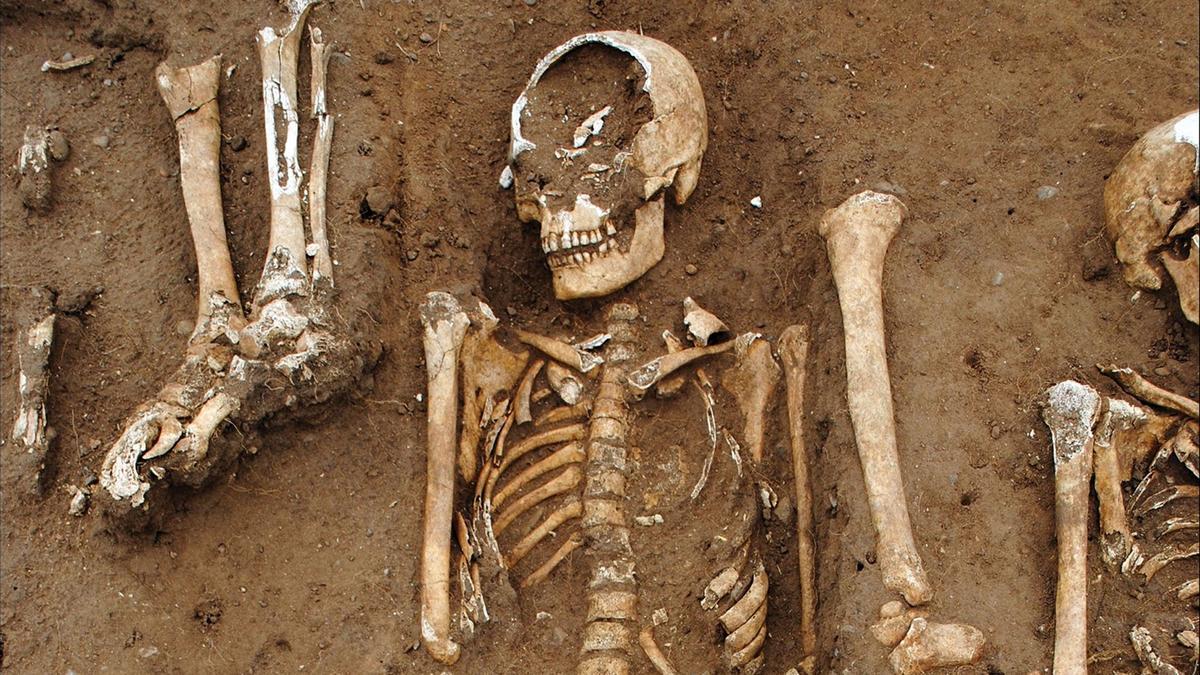Black Plague Bacteria Found in Remains of Man at Besora Castle in Osona

A research team from the Autonomous University of Barcelona (UAB), together with the archaeological company Atics, has discovered black plague bacteria, Yersina pestisin a man buried in the 14th century in the cemetery of the Besora Castle (Osona). As UAB reported this Monday, the discovery confirms that the Black Death epidemic that devastated Europe in the Middle Ages also reached rural areas in the interior of Catalonia.
The genomic study was conducted by researchers from Department of Biological Anthropology in the Laboratory of Ancient DNA and current research at UAB led by Cristina Santos, researcher in the Department of Animal Biology, Plant Biology and Ecology. The analysis was carried out on human remains from a burial that last year attracted the attention of archaeologists and anthropologists examining the remains of the parish cemetery of the church of the castle of Santa Maria del Besora, including the skeletal remains of three adults who were buried at the same time. The scenario, given its location and placement inside the grave, with no signs of violence or other observable pathology, suggested an epidemic episode.
Dating Carbon-14 found a burial site between 1300 and 1370, coinciding with the great Black Death epidemic of the 14th century, prompting genomic analysis to support the hypothesis that these could have been deaths from the great epidemic.
Despite the degradation of the samples, UAB researchers found ancient DNA black plague bacteria in dental remains of one of the persons. The fact that these burials are close to last year’s and are located at levels chronologically corresponding The Great Black Plague of 1348. leads researchers to believe that these may also be people who died from the infection. The first genomic analysis will be conducted in the next few months to confirm this.
Research into genetic changes
“These are exceptional results that show the high mortality caused by the plague epidemic in rural areas of inland Catalonia,” he noted. Christina SantosThe identification of the Black Death bacteria opens up the possibility of conducting innovative studies related to adaptive mechanisms of response to pathogens in human populations in Catalonia.
“The fact that the cemetery of the monumental complex of Besora Castle contains remains of burials from the 11th to 19th centuries may allow us to empirically verify in the future genetic changes which were produced and the frequency of which genetic variants may have increased as a result of the pandemic,” concludes Santos.
The same UAB research group already identified the Black Death bacterium last year in Vilafranca del Penedesin the necropolis of Cal Pas and Figes. The ancient and modern DNA laboratory of the Department of Biological Anthropology of the UAB was then the first in Catalonia to discover the bacillus.
The research work is led by UAB professors. Xavier Jordana and Nuria Armentanofrom the Department of Biological Anthropology of the Department of Animal Biology, Plant Biology and Ecology, and Cesc Busquetsfrom the Department of Archaeology of the Department of Ancient and Medieval Sciences together with Marta Fabregas from ATICS SL
The Besora Castle monumental complex is one of the headquarters of the UAB Archaeology Campus and each year hosts students from the UAB/UB Master of Biological Anthropology and UAB Archaeology programs for two weeks of immersion in archaeology and field anthropology.
